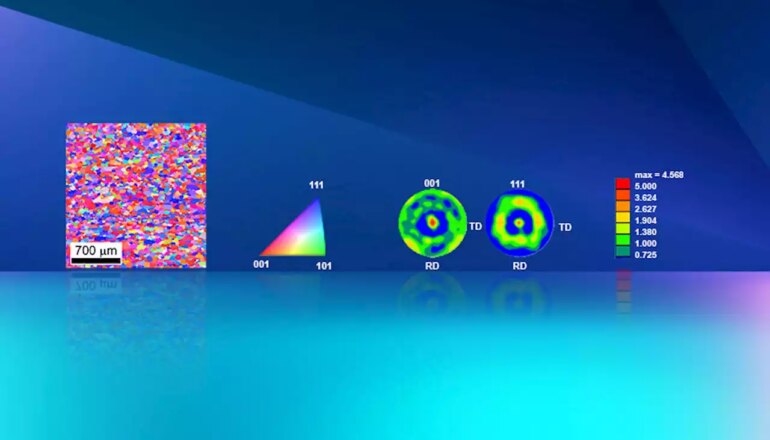Researchers from Lawrence Livermore, Los Alamos and Sandia national laboratories have teamed up to better understand the strength of tantalum, an important platform-development material in the tri-lab community.
The work builds from the understanding that tantalum remains in a single solid phase across the full range of conditions examined. This includes conditions accessed by the National Ignition Facility at LLNL and the Z machine at Sandia. While tantalum is nominally simple, it still exhibits complexity in how atomic-scale processes in the material manifest strength variability that spans nearly two orders of magnitude.
The research, which is featured in Acta Materialia, focused on answering two questions: do these diverse experiments provide a coherent picture of strength? And, by integrated analysis of diverse experiments, can researchers advance the theoretical understanding and modeling of strength in extreme conditions?
The researchers used data from seven diverse types of experiments and compared three independent strength models to explore strength with a novel degree of cross-comparison over a wide span of conditions. In this setting, strength refers to the material’s resistance to permanent deformation. That kind of permanent deformation is often discussed in terms of plastic strain. The speed of the material’s deformation—its rate—also was explored. The rate is inversely related to the time duration of the experiment. The experiments that had the shortest durations probed the highest strain rates. The NIF experiments accessed the most extreme conditions, and strength data are collected over only tens of nanoseconds in the NIF shots.
Nathan Barton, program group leader for condensed matter physics within the Weapons Physics and Design Program at LLNL and co-author of the work, said the work is consistent with the big-science missions of the NNSA laboratories.
“The work critically drew on subject matter expertise from across the labs,” Barton said. “We needed expertise in both the data collection and the relevant analysis techniques for all of the experimental platforms.”
The assembly of the tri-lab team grew out of technical discussions led by Bruce Remington at LLNL, Rusty Gray at LANL and Dawn Flicker from Sandia. Dana Dattelbaum, who oversees the relevant program area at LANL, described the level of tri-lab collaboration leading to this paper as unprecedented.
In traditional applications, researchers tend to think about the strength of a material as being relatively insensitive to pressure and rate. Looking at the extreme range of conditions accessed on experimental platforms in the NNSA enterprise, researchers see strength variations by nearly two orders of magnitude—from 0.15 gigapascal (GPa) to over 10 GPa. A gigapascal corresponds to roughly 10,000 atmospheres of pressure. As a useful point of comparison, a high-strength steel might have strength around 1 GPa at ambient conditions and conventional rates. So across the range of conditions studied, the tantalum went from being much softer to being about 10 times stronger than a high-strength steel under conventional conditions.
“The unique aspect is the level of understanding that we were able to gain by taking a unified look at data from such a range of experimental platforms,” Barton explained. “The work outlined in the paper examines pressures from ambient to over 350 GPa, strain-rates from 10−3 to 108 per second, and temperatures from 148 to 3,800 Kelvin.”
The integrated approach helped researchers isolate pressure and rate effects. “While it is gratifying that we could adjust models that are in common use to capture the observations, it is clear that we have more work to do to fully understand and predict material response over such a dramatic range of conditions,” Barton said.
The tri-lab activity outlined in the paper is ongoing and continues to be a valuable vehicle for coordinating the evaluation of experimental data from a variety of experimental platforms, including flagship DOE facilities such as the NIF at LLNL, the Z machine at SANDIA and the Dynamic Compression Sector at the Advanced Photon Source at Argonne National Laboratory. The tri-lab team has shifted emphasis to examine the strength of materials that undergo phase transformations, and a level 2 milestone in this area was just completed successfully. Several presentations at an American Physical Society conference this summer will feature aspects of this more recent work, and there will be additional publications from the tri-lab team.
More information:
Michael B. Prime et al, A broad study of tantalum strength from ambient to extreme conditions, Acta Materialia (2022). DOI: 10.1016/j.actamat.2022.117875
Provided by
Lawrence Livermore National Laboratory
Citation:
Researching tantalum’s strength from ambient to extreme conditions (2022, April 13)


